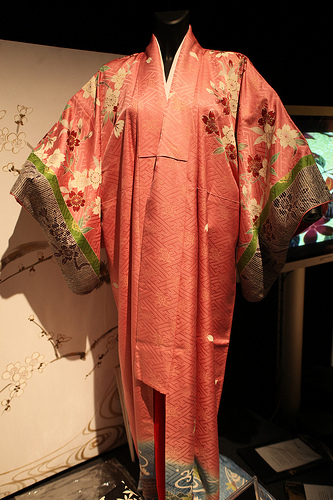The Art of the Kimono
Did you know?
- You may not find cherry blossoms on wedding kimono, but cranes and Mandarin ducks are common adornments. Why? Both birds mate for life.
- The length of the panel of fabric that hangs from the underside of the sleeves of a kimono depends on the age—and availability—of its wearer. In other words, the draping is longest when a woman is young and single—the idea being that she can wave her arms and the beautiful flowing garment will attract the attention of suitors. Whereas an older woman would have shorter, less flamboyant sleeves.
- Evergreen pine needles and pine boughs, two popular motifs found on kimono worn for all occasions, symbolize endurance, a hugely important characteristic in Japanese culture. The literal translation for the Japanese word for good luck (”gambate”) is actually “endure.”
- Just like cherry blossoms, you won’t often see the big beautiful blossoms of camellia on a kimono. When a camellia dies, the whole bloom falls off of its branch. It’s been equated with the beheading of a samurai, and thus decorating kimono with camellia is very rare, if not taboo.
- Because tortoises are known for their longevity, tortoise shells, when depicted on kimono, are meant to wish wearers a long life.
Because of a Smithsonian piece on The Art of the Kimono exhibit ;)



Comentários